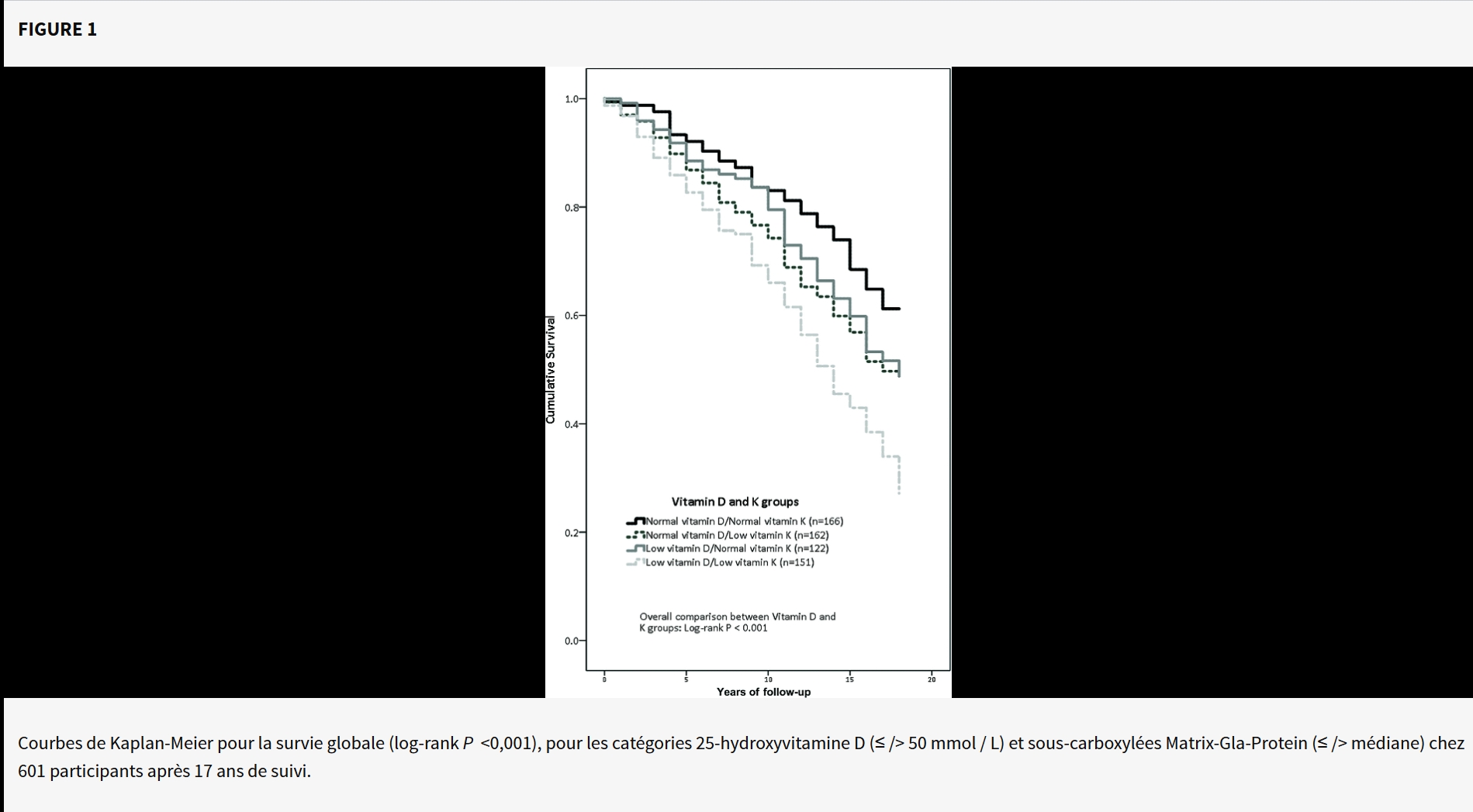The Association of Vitamin D and Vitamin K Status with Subclinical Measures of Cardiovascular Health and All-Cause Mortality in Older Adults: The Hoorn Study
Elisa Dal Canto, The Journal of Nutrition, 29 October 2020
Background
A low vitamin D and K status has been associated with increased cardiovascular disease (CVD) risk but the evidence of their combined effect on cardiovascular health is limited.
Objectives
Our study aimed to investigate the prospective association of vitamin D and K status with subclinical measures of cardiovascular health and all-cause mortality among a population of Dutch Caucasians.
Methods
We performed an observational prospective study on 601 participants of the Hoorn Study (mean ± SD age: 70 ± 6 y, 50.4% women, BMI: 27.2 ± 4.0 kg/m2), of whom 321 underwent an echocardiogram in 2000–2001 and 2007–2009. Vitamin D and K status was assessed at baseline by serum 25-hydroxyvitamin D [25(OH)D] and plasma desphospho-uncarboxylated matrix-gla protein (dp-ucMGP)—high concentrations indicate low vitamin K status. Vital status was assessed from baseline until 2018. We studied the association of categories of 25(OH)D (stratified by the clinical cutoff of 50 mmol/L) and dp-ucMGP (stratified by the median value of 568 pmol/L) with echocardiographic measures using linear regression and with all-cause mortality using Cox regression, adjusted for confounders.
Results
Compared with markers of normal vitamin D and K status, markers of low vitamin D and K status were prospectively associated with increased left ventricular mass index (5.9 g/m2.7; 95% CI: 1.8, 10.0 g/m2.7). Participants with low vitamin D and K status were also at increased risk of all-cause mortality with an HR of 1.64 (95% CI: 1.12, 2.39) compared with normal vitamin D and K status.
Conclusions
A combination of low vitamin D and K status is associated with adverse cardiac remodeling and increased risk of all-cause mortality in men and women. Future studies should investigate whether vitamin D and K supplementation could help to improve cardiovascular health and to decrease CVD risk.














